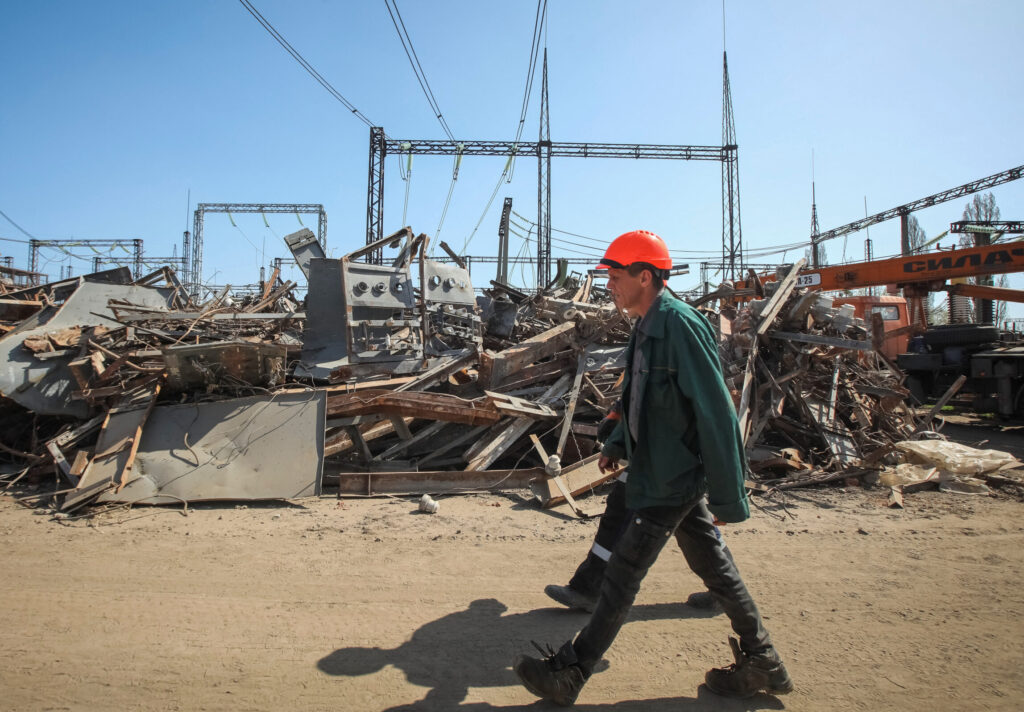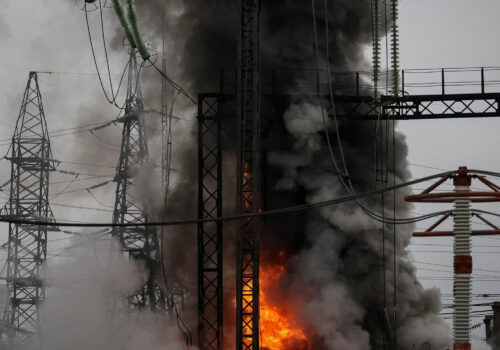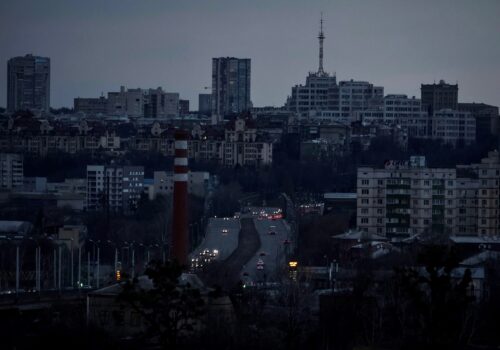In October 2022, the Kremlin launched what was then the most comprehensive bombing campaign of the war. For the next five months, waves of Russian missiles and drones struck Ukraine’s civilian energy infrastructure on an almost daily basis. The attacks aimed to break Ukraine’s resistance by making life as unbearable as possible for tens of millions of Ukrainian civilians.
At the time, Kremlin spokesman Dmitry Peskov openly stated that Ukraine could “end the suffering” of the civilian population by fulfilling Russia’s demands. Instead, the Ukrainian authorities worked with the country’s partners to improve air defenses and import large quantities of electricity generators. Ukrainians endured a dark and often terrifying winter, but the country survived.
The International Criminal Court in The Hague has recently issued arrest warrants for high-ranking Russian military officials on suspicion on committing war crimes and crimes against humanity in connection with the winter 2022-23 bombardment of Ukraine’s civilian infrastructure. However, this has not prevented the Kremlin from embarking on a new air offensive against Ukraine’s power grid and other essential infrastructure targets across the country. Once again, Russia appears intent on depopulating entire regions of Ukraine.
Stay updated
As the world watches the Russian invasion of Ukraine unfold, UkraineAlert delivers the best Atlantic Council expert insight and analysis on Ukraine twice a week directly to your inbox.
In March 2024, large-scale Russian bombing of Ukraine’s energy infrastructure resumed with a series of massive barrages involving drones and a variety of missiles. Russian military planners appear to have learned from the mistakes of Moscow’s earlier bombing campaign; instead of focusing on the Ukrainian electricity grid’s transmission systems, this new wave of airstrikes has concentrated on energy generation infrastructure.
The results have been devastating. Within a matter of weeks, Ukraine has lost many of its most important thermal power plants and key hydroelectric plants. Major cities including Kharkiv and Odesa have experienced periodic blackouts and prolonged disruption to energy supplies. Experts believe it will take years to repair damaged facilities and replace equipment.
Russia has been able to achieve such success by exploiting the growing gaps in Ukraine’s air defenses due to extended political deadlock in the US over critical military aid. With Ukrainian air defense crews forced to ration dwindling supplies of interceptor missiles, Russia has been able to hit and destroy high-value targets such as the biggest power plant in the Kyiv region. With further US aid now expected, Ukrainians may soon see a marked improvement in the country’s air defenses. However, the clock is ticking and Russian attacks continue.
Eurasia Center events

By making large parts of Ukraine unlivable for the civilian population, Russia hopes to create a new wave of Ukrainian refugees. Analysis of the winter 2022-23 bombing campaign indicates that Russian attacks on the Ukrainian power grid did lead to an increase in the number of people exiting Ukraine for the safety of neighboring EU countries.
Unless Ukraine urgently receives additional air defense systems and ammunition from the international community, there is a very real danger that millions of Ukrainians will be forced to flee their homes in the coming months. If that happens, many would be likely to join the millions of Ukrainians who have already left the country for the European Union since the onset of Russia’s full-scale invasion.
Russia’s depopulation tactics have serious consequences for Ukrainian morale and for the country’s wartime economy. Research has found that economically active Ukrainians are the most likely to leave as a result of persistent bombardment. Many Ukrainian companies are already finding it increasingly difficult to fill vacancies, especially in labor-intensive sectors of the economy.
Meanwhile, fresh influxes of Ukrainian refugees would create challenges for the country’s European partners, who have already accommodated extremely large numbers of Ukrainians since 2022. A major new wave of refugees could create social tensions and undermine political support for Ukraine within the EU. This potential for destabilization is also very much part of the Russian strategy.
Depopulating entire regions of Ukraine will pave the way for new Russian advances, while also weakening Ukraine’s wartime economy and making it more difficult to preserve the country’s independence. The resulting surge in Ukrainian refugees could also have a range of negative consequences for Kyiv’s partners in the EU.
It is clear that both Ukrainian and Western leaders have a vital interest in protecting the country against Russia’s new air offensive. In the short term, this means delivering sufficient air defenses to guard cities and critical civilian infrastructure against Russian bombardment, while also providing the necessary equipment to repair Ukraine’s battered energy infrastructure. News of a recent breakthrough regarding US aid is encouraging, but all of Ukraine’s allies need to contribute to the strengthening of the country’s air defenses.
Ultimately, the international community must hold Russia’s military and political leaders accountable for war crimes against the civilian population. However, the wheels of international justice turn notoriously slowly, while Ukraine’s needs are urgent.
Olga Aivazovska is co-founder of the International Center for Ukrainian Victory (ICUV) and head of the board at Civil Network OPORA. Andriy Savchuk is a data analyst at Civil Network OPORA.
Further reading
The views expressed in UkraineAlert are solely those of the authors and do not necessarily reflect the views of the Atlantic Council, its staff, or its supporters.

The Eurasia Center’s mission is to enhance transatlantic cooperation in promoting stability, democratic values and prosperity in Eurasia, from Eastern Europe and Turkey in the West to the Caucasus, Russia and Central Asia in the East.
Follow us on social media
and support our work
Image: An employee of a critical power infrastructure installation, which was recently hit during Russia's missile strike, walks by its destroyed part, amid Russia's attack on Ukraine, in Kharkiv. April 10, 2024. (REUTERS/Vyacheslav Madiyevskyy)




